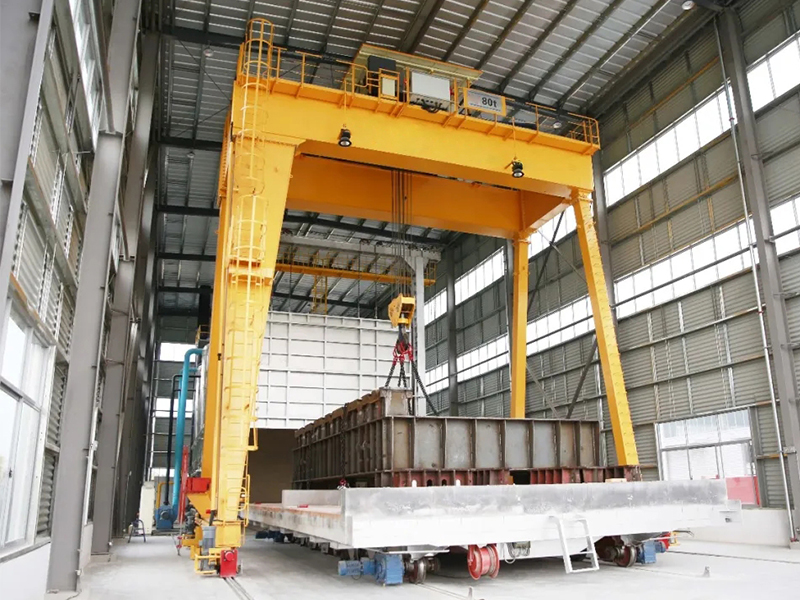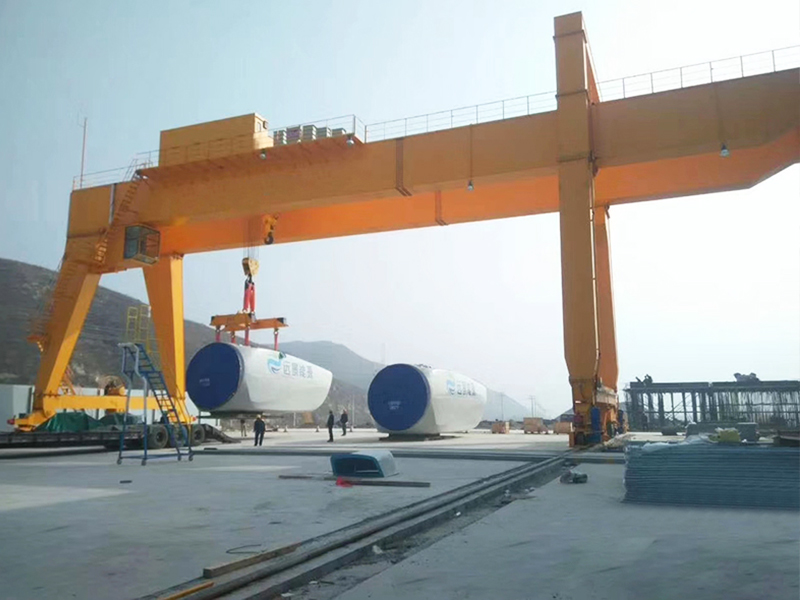Gantry cranes play a pivotal role in various industries across the Philippines, contributing to efficient cargo handling, construction projects, and warehouse operations. However, the significance of their role comes with an inherent responsibility to ensure the safety of both workers and the surrounding environment. In the Philippines, stringent safety regulations govern the operation and maintenance of gantry cranes to mitigate risks and prevent accidents.

Compliance with Local Laws:
One of the fundamental aspects of gantry crane safety in the Philippines is adherence to local laws and regulations. The Department of Labor and Employment (DOLE) and the Occupational Safety and Health Center (OSHC) establish and enforce safety standards applicable to lifting equipment, including gantry cranes. Companies are obligated to comply with these regulations to create a safe working environment.
Safety Features and Protocols:
Gantry cranes in the Philippines must be equipped with specific safety features to ensure accident prevention. These features include overload protection systems, emergency stop buttons, and limit switches. Regular maintenance checks are conducted to ensure these safety mechanisms are in optimal working condition. Additionally, comprehensive safety protocols are established, outlining procedures for crane operation, emergency situations, and routine maintenance.
Operator Training and Certification:
The human factor is crucial in gantry crane safety. In the Philippines, operators are required to undergo specialized training and obtain certification before operating gantry cranes. Training programs cover various aspects, including crane controls, load handling, and emergency response procedures. Certification ensures that operators have the necessary skills and knowledge to operate the equipment safely and efficiently.
Routine Maintenance Practices:
Regular maintenance is a cornerstone of gantry crane safety. Companies are obligated to implement routine maintenance practices as part of their safety protocols. This includes daily inspections by operators, periodic checks by maintenance personnel, and scheduled comprehensive examinations. Any identified issues or signs of wear and tear are promptly addressed to prevent potential hazards.

Inspection Requirements:
Gantry cranes in the Philippines are subject to thorough inspections to guarantee compliance with safety standards. Inspections are typically conducted by authorized personnel or third-party inspection agencies. These examinations cover structural integrity, mechanical components, electrical systems, and safety features. Certificates of compliance are issued upon successful inspections, affirming that the gantry crane in the Philippines meets all safety requirements.
Common Issues and Troubleshooting:
Despite stringent regulations and regular maintenance, gantry cranes may encounter issues that require immediate attention. Common problems include electrical malfunctions, structural wear, and mechanical failures. A crucial aspect of safety regulations involves establishing clear troubleshooting procedures and response protocols to address issues promptly and effectively.
Emergency Response Planning:
In the Philippines, safety regulations for gantry cranes necessitate the development of comprehensive emergency response plans. These plans outline procedures to be followed in the event of accidents, equipment failures, or other emergencies. They include communication protocols, evacuation procedures, and first aid measures. Regular drills and training sessions ensure that all personnel are well-prepared to respond to emergencies efficiently.
Environmental and Permitting Considerations:
Gantry crane safety goes beyond the equipment itself; it also encompasses environmental and permitting considerations. Regulatory authorities in the Philippines may require permits for the installation and operation of gantry cranes, especially in environmentally sensitive areas. Companies must comply with these requirements to ensure that crane operations do not pose risks to the environment or local communities.
Continuous Improvement and Innovation:
Safety regulations for gantry cranes in the Philippines are dynamic, evolving with advancements in technology and industry best practices. Companies are encouraged to embrace continuous improvement and innovation in safety measures. This includes adopting new technologies such as real-time monitoring systems, advanced sensors, and automation to enhance overall safety performance.
Conclusion:
Gantry crane safety in the Philippines is a multifaceted commitment that involves compliance with regulations, rigorous training, routine maintenance, and emergency preparedness. By prioritizing safety, companies not only ensure the well-being of their personnel but also contribute to the overall productivity and sustainability of industries. As safety regulations evolve, it is imperative for stakeholders to stay abreast of changes and proactively implement measures that enhance the safety of crane operations in the Philippines.
